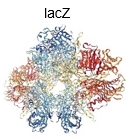In this video, we're going to talk about the first step in purifying a protein, and that's protein extraction. So before we can even think about purifying a protein, we first have to be able to obtain our protein from a source, and that source of proteins are typically cells. In order to obtain our proteins from cells, we have to perform protein extraction. The first step in purifying a protein is protein extraction which just entails the removal of all the proteins from the source, which again are typically cells. The process of cell homogenization involves breaking open cells to get them into smaller fragments and to release all of their contents into the solution. All of the contents of the cell are collectively referred to as the crude extract or the homogenate. The crude extract or homogenate is just the total released contents of the cell. The crude extract includes the organelles of the cell, such as the nucleus, endoplasmic reticulum, mitochondria, and the molecules of the cell such as lipids, carbohydrates, nucleic acids, and of course, the proteins which we are interested in extracting. Protein extraction certainly isn't going to purify our protein since we're going to have a big mixture of all these other things that we're not really interested in.
There are actually several different techniques used for cell homogenization or breaking open cells. We're not going to talk about the techniques in detail, but you should be familiar with a couple of different ways to perform cell homogenization. The first is to use lysis buffers, which are specific buffers or solutions that interact with the plasma membrane and break open the cell. The next way is to use a blender or a homogenizer to physically break open the cells. These are instruments where you put the cells in them and you physically smash the cells open to really get them to release their contents. The last way that we're going to talk about is sonication. Sonication uses sound waves to break open the cells and to perform cell homogenization.
In our example of protein extraction, what you'll notice is that we have our cell over here on the far left, and this is a red blood cell. We're performing cell homogenization on this red blood cell, so that we can get it to release all of its contents. The cell here is being burst open and it's releasing all of its contents into the solution. We're able to extract the proteins in this fashion. We also call it protein extraction because the proteins are being removed. In addition to the proteins, notice that we have the nucleus, endoplasmic reticulum, mitochondria, RNAs, DNAs, and carbohydrates. It's just a big mixture. This is together referred to as the crude extract which is all the contents of the cell. Again, protein extraction does allow us to obtain all of our proteins, but it's certainly not a purified protein yet. You can see how we're going to need more techniques to continue to purify our protein. The first step is to be able to obtain the proteins, and we have done that. The next step in the process is differential centrifugation. Before we talk about that, we'll get a little bit of practice in our practice videos, so I'll see you guys there.


